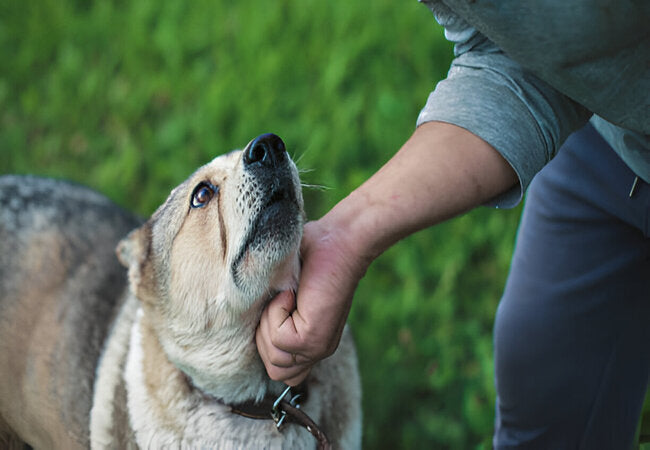Adopting a Dog with a History of Abuse in 2025 – Vet‑Approved Guide to Healing Trust & Building Confidence 🐾❤️

In this article
Adopting a Dog with a History of Abuse in 2025 – Vet‑Approved Guide to Healing Trust & Building Confidence 🐾❤️
By Dr. Duncan Houston BVSc
Welcoming a dog with a history of abuse into your home is a profoundly rewarding—but often challenging—journey. These gentle souls may arrive with fear, mistrust, or anxiety, carry scars that run deeper than skin, and require a compassionate approach grounded in veterinary insight. In this 2025 vet‑approved guide, you'll find a step-by-step roadmap with medical, environmental, and behavioral strategies to help your new companion heal, blossom, and thrive. 🌱🐶
1. 🩺 Start with a Thorough Veterinary Assessment
Before diving into behavior work, a complete vet exam is essential:
- ✔️ Check for physical injuries—old fractures, bruises, malnutrition, skin infections or scars.
- ✔️ Rule out pain or illness—arthritis, dental issues, internal problems may underlie fear or aggression.
- ✔️ Consider anxiety support—your vet may recommend supplements, medications, or natural remedies like pheromone therapy.
Physical discomfort can exacerbate fear and interfere with trust-building efforts later on.
2. 🔐 Create a Safe, Low-Stress Environment
Surrounding your dog with predictability and control helps them feel secure:
- 🛋️ Provide a retreat—a crate or quiet room stocked with blankets where no one intrudes.
- ⏰ Establish routines—consistent meal, potty, walk, play, and rest times reduce anxiety.
- 🎯 Respect boundaries—avoid pushing affection; let them approach you. Offer choices via toys or resting spots.
3. 🐕🦺 Slow Introduction & Socialization
A phased, gradual process is vital:
- Let your dog acclimatize in a low-traffic zone before introducing other pets or visitors.
- Use calm body language—quiet voice, no direct eye contact until you're certain of their comfort.
- Controlled exposure, with positive reinforcement for calm behavior during new experiences (e.g., car rides, strangers). Avoid overwhelming them.
4. 🌟 Focus on Building Trust Through Positive Reinforcement
Reward-driven strategies form the backbone of confidence-building:
- 🎁 Click‑and‑treat gently rewards calmness. Avoid punishment which can exacerbate fear.
- 🎯 Set small, achievable goals—learning to sit calmly, walking past a trigger, greeting you without low posture.
- 📋 Keep a behavior journal—track what calms them and triggers a reaction, guiding your training plans.
5. 🧩 Behavior Modification Techniques
Desensitization and counter-conditioning are powerful tools:
- 🌓 Identify triggers—leash tightening, reaching hands, loud noises—and pair them with treats or safe distance exposure.
- 📈 Graduated exposure—slowly increase intensity or proximity only as long as your dog remains calm and confident.
- 🌿 Apply pheromone therapy (DAP diffusers, collars) to soothe stress during difficult training sessions.
- 💊 Vet-recommended meds—for moderate to severe anxiety, medications may support comfort while building long-term habits.
6. 🤝 Using Professional Support Wisely
Trained professionals improve outcomes:
- 👩⚕️ Veterinary behaviorists—can prescribe and manage behavioral medicines.
- 🎓 Certified behavior consultants/trainers—work with experience in trauma-sensitive, least aversive models.
- 📝 Team approach—vets + trainers + rescue/foster info team up for holistic plans tailored to your dog’s history.
7. 🧠 Monitor Progress & Adjust Signs of Improvement
Notable markers include:
- Approaching you willingly, tail relaxed.
- Engaging in play or resting visibly when calm.
- Lesser startle reactions, increased focus on treats during triggers.
Log progress over months—significant healing can take months or even years.
8. ✅ Daily Care Cheat Sheet
| Category | Action |
|---|---|
| Health | Full vet check → pain, skin, immune, behavioral screening |
| Environment | Safe retreat, routine, quiet areas |
| Training | Click/treat sessions, desensitization, gentle exposure |
| Emotional | Pheromones, calm presence, no surprises |
| Support | Behaviorist or vet-guided support when needed |
9. 📱 Ask A Vet App 2025 Support
Let Ask A Vet guide your adoption journey:
- 📹 Upload videos of interactions or fearful responses for expert review
- 🧠 Get customized behavior modification plans with stimuli, duration, and reward advice
- 💬 Live chat for adjusting routines or resolving emerging issues
❤️ Final Thoughts
Welcoming an abused dog into your life is a profound act of love. With informed veterinary support, compassionate behavior strategies, and unwavering patience, you can help your new companion transform fear into trust—and create a bond built on safety, confidence, and joy. In 2025, you can provide healing that lasts a lifetime. 🐾❤️
Need personalized guidance? Visit AskAVet.com or download the Ask A Vet app for expert-led behavior plans, anxiety support, and compassionate training advice.






